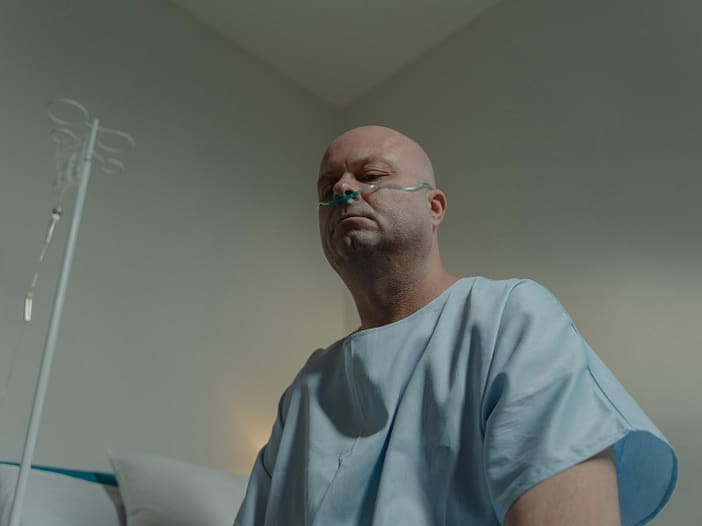
Between a Rock and a Hard Place: Illness and Incarceration
What does it mean to be ill? Going by Dr. Peter Eisenberg’s definition, it means to lose your freedom. Working as an oncologist with prisoners from San Quentin Rehabilitation Center for many years, he noticed one thread that connected all of them: they were confined in multiple ways. While being incarcerated is obviously physically constraining, a chronic illness diagnosis adds an additional layer of imprisonment. Having to work between the healthcare and justice system is extremely emotionally and physically taxing for those who need care for illnesses like cancer, kidney disease, or other long-term health conditions. Moreover, adequate access to healthcare and pain management has proven impossible for inmates in underfunded rural prisons.
Chronic illnesses are far more prevalent in incarcerated people than in the general population, with prisoners being over twice as likely to suffer from conditions like HIV/AIDS, asthma, and hepatitis C. While many conditions are curable or treatable, individuals often go untreated until the disease reaches an acute state in which it can no longer be ignored. From a provider’s perspective, it can be easy to be cynical about the incarcerated patients seen. Those serving long sentences, especially for violent crimes, are often looked down upon, and may even be seen as medicine seeking when requesting pain relief for certain conditions. Dr. Eisenberg takes a different approach to these patients saying, “[the prisoners at San Quentin] are members of our community, so they deserve to be seen as any other member … in as respectful of a way as possible.” While this is a positive and helpful outlook, it is unfortunately a very rare one, as many inmates report more negative experiences with healthcare professionals than positive ones.
Ron Carter, a former patient of Dr. Eisenberg and former inmate at San Quentin provides a different, more disturbing outlook into the realities of life in prison with a chronic illness. Diagnosed with kidney disease after being sentenced to a 42 year to life sentence, Carter struggled maintaining his health day-to-day. Starting with his diet, he notes that the facility failed to accommodate the low sodium regimen recommended for his condition- a complaint that is far too common for those suffering with things like diabetes and high blood pressure. A 2012 study conducted by the U.S. Department of Justice shows that around half of all state and federal prisoners suffer from some form of chronic illness, but the diet of the average prisoner does not reflect the sheer amount of inmates with special food needs.
Impact Justice, a criminal justice reform research group, performed a study in 2020 looking into the diets of prisoners all across the United States. Beyond the overwhelming majority of incarcerated people reporting food that is texturally and tastefully unappealing, a similar majority reported being served food that was rotten at least once during their sentence. Moreover, the food is often reported to be high in salt, carbohydrates, and processed sugars while low in healthy fats and micronutrients. This diet would exacerbate the effects of almost any chronic health condition in the free world, but combined with the unhygienic and stressful atmosphere of a correctional facility, the conditions are nearly impossible to heal in.
Beyond not receiving adequate nutrition, Mr. Carter also tells of experiences in not receiving proper medication. While he was prescribed opioids for pain after his knee replacement surgery, the staff at the medical facility would only give him Tylenol, even though they watched while he swallowed his pills. Standing in the medication line is an experience which is often humiliating, having to wait for long periods of time and monitored while ingesting the medication. While the illegal distribution of opioids is a serious concern in prisons, they are often withheld from individuals who actually need them, despite the protocols in place to ensure they aren’t being misused.
Speaking with Dr. Eisenberg about his experience prescribing pain medication, he said that after he gave the order for stronger relievers, he had no way of knowing how they were administered after the patient was back in the prison facility. A study done between 2018 and 2020 by researchers at Johns Hopkins University showed that only one-fifth of incarcerated individuals with asthma were receiving treatment for the condition. Moreover, only one-third of individuals diagnosed with HIV received antivirals. As outpatient healthcare providers are doing their due diligence to prescribe and treat as they see fit, the internal prison staff often drop the ball when it comes to day to day care.
“Every month there was a different disease going around: staph infection, at one point Legionnaires’ disease… I don’t know how often they clean the air vents so we were just constantly breathing everybody else’s germs,” said Mr. Carter, noting that there was no improvement in sanitation even during the COVID-19 pandemic. While common spaces like the cafeteria and main seating area are typically cleaned daily, there are many parts of the building that remain neglected like the pipes and the air vents. According to the Prison Policy Initiative, around one-third of all prisons are located near a federal Superfund site- a location in which there are serious environmental contaminants and it is recommended for people not to live in the area. This causes the prisoners to constantly ingest toxic substances through their air and water like lead and arsenic. These chemicals alone can cause cancer and other serious diseases, but can also worsen existing conditions. While many other government funded facilities are well maintained and cared for, the cleanliness and safety of prison facilities tends to be put on the back burner.
Chronic illness care isn’t just a problem for prisoners, it is an issue that affects individuals and families all across the country. Providing adequate healthcare is a basic human right and can also provide better outcomes for reintegration if the individual isn’t struggling to maintain their health after being released. While some call for wider use of compassionate release, real reform begins in the prison by believing patient complaints and being willing to hire the correct staff for the job or spend money on outpatient care. “We are literally sitting with death.” says one hospice worker who stays with prisoners in their final moments. This is the exception for many prisoners, as quite a few will pass alone and without their family or staff present. With so much money being placed into the prison system, it is overdue time to spend money on the prisoners themselves.

